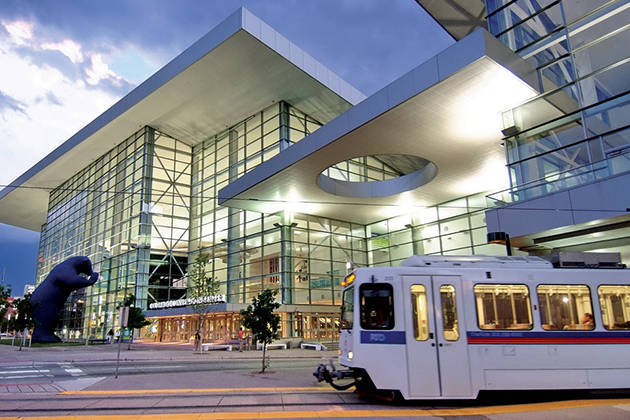Denver’s First Ever Transit Plan Gets Underway

Editor’s note: If you want to help shape Denver’s transit network, take this map-based survey where you can make as many recommendations as you want.
As Denver grows, the city needs to take transit into its own hands. As helpful as RTD and its expanding rail network may be for suburban commuters, the region’s new transit lines don’t do much for the increasing number of people who are making trips from one part of the city to another. Denver needs a better transit system to serve these needs.
Denver’s first transit plan got off the ground Tuesday with the first meeting of the “Denveright” transit task force, a group of about 30 residents, advocates, public officials, and policy experts who will play a key role in shaping the future of transit in the Mile High City.
The meeting answered some basic questions about what to expect from the 18-month transit planning process. If you’re curious about Denver’s transit future, here’s a look at how things are shaping up.
What will the transit plan do?
First the task force will establish goals. Does Denver care about increasing transit ridership? Improving access to jobs for vulnerable populations? Creating vibrant economic centers around stations? All of the above? These are some of the questions the task force will wrestle with.
Based on those goals, the finished document will identify the corridors where transit service needs to be improved and examine how to do it. On congested streets with lots of bus ridership, the answer might be dedicated bus lanes so passengers don’t get bogged down in traffic. On other routes, simply providing more frequent service might be the answer. Other factors like the quality of the pedestrian environment will also come into play.

“It’s not just about having a bus on the street or just about having a light rail train,” said Thomas Brennan, a principal at Nelson/Nygaard, the firm heading up the planning process. “It’s about having a complete system where you’ve got quality service, you’ve got quality facilities. And we can dream big. We can dream about more than just having a bus stop, but actually a place that creates some wonderful community.”
How will these big dreams be funded?
The task force is not charged with identifying potential revenue streams for the projects in the transit plan, said Kristina Evanoff, the project manager. The more important goal is to create a plan that gets people excited, she said, but funding mechanisms will be decided on a policy-making level.
In Seattle, where Nelson/Nygaard helped develop a transit plan, the city bought in big. Since that plan’s completion, Brennan said, Seattle has passed local tax measures that bring in $45 million a year for transit service, as well as $930 million over nine years to fund capital projects like 10 BRT lines, two light rail lines, and a streetcar connector.
Denver’s transit plan could prompt similar investments.
What about the cars?
One task force member asked if cars will be a part of the transit plan. In a way, yes, improving the transit system will affect the system for private automobiles. There’s no way around that when you have a limited amount of street space to work with.
Brennan said that Denver’s transit system must exist in the city’s current footprint — that this plan is not about making streets wider, it’s about moving more people in the space we have. “We’re not adding asphalt, we’re not moving curbs out,” he said. “We need to move more people in the same right of way. Transit is a great opportunity to do that, but that means trade-offs.”
What’s next?
Over the next few months, the task force will develop a “state of the system” report analyzing Denver’s intra-city transit system. It will look at current travel patterns and the quality of transit service. The intent is to inform decisions about where and how to improve transit in the city.
An earlier version of this article erroneously stated that the task force would be charged with identifying funding streams. The article has been changed to reflect that.


